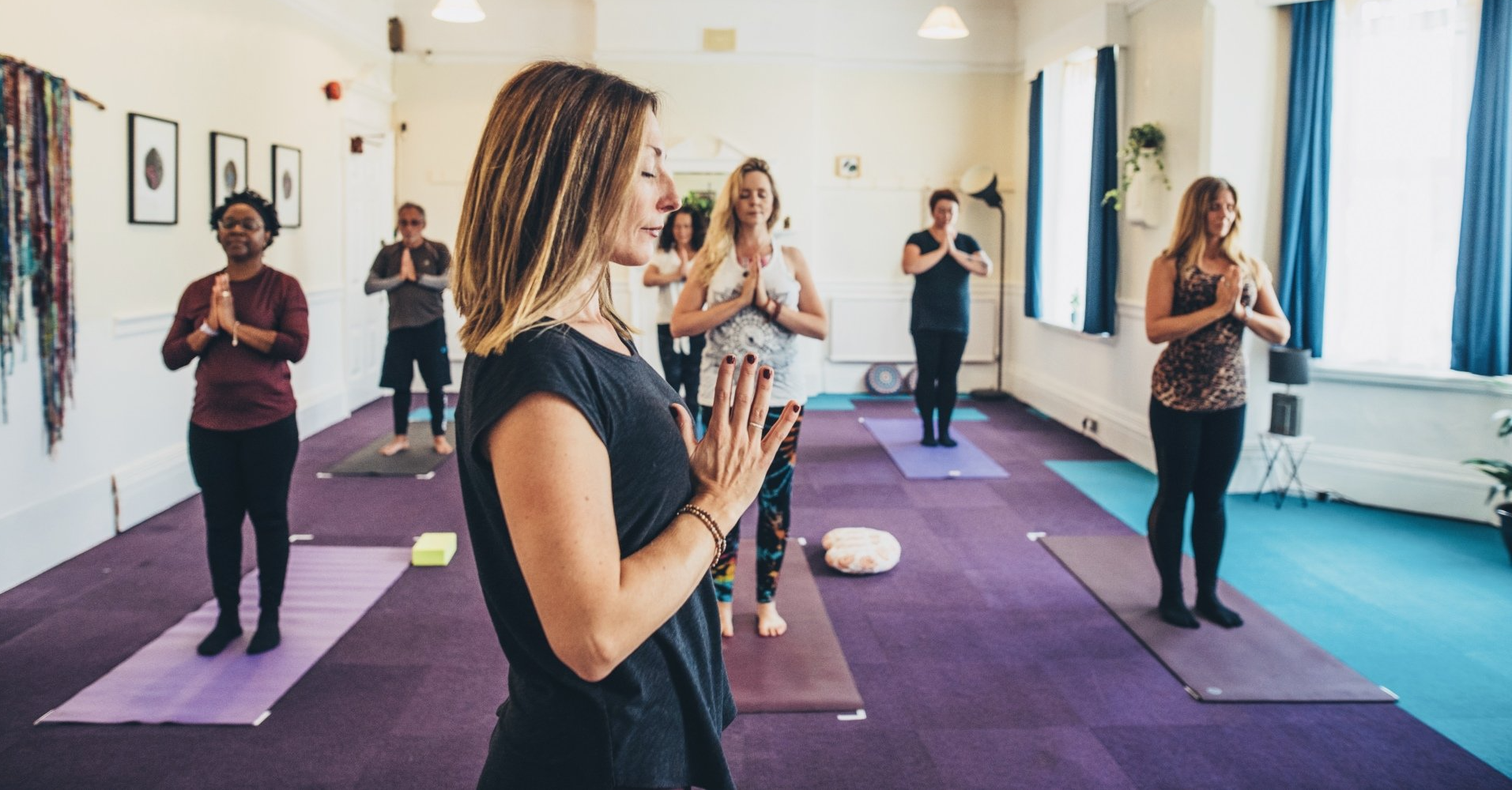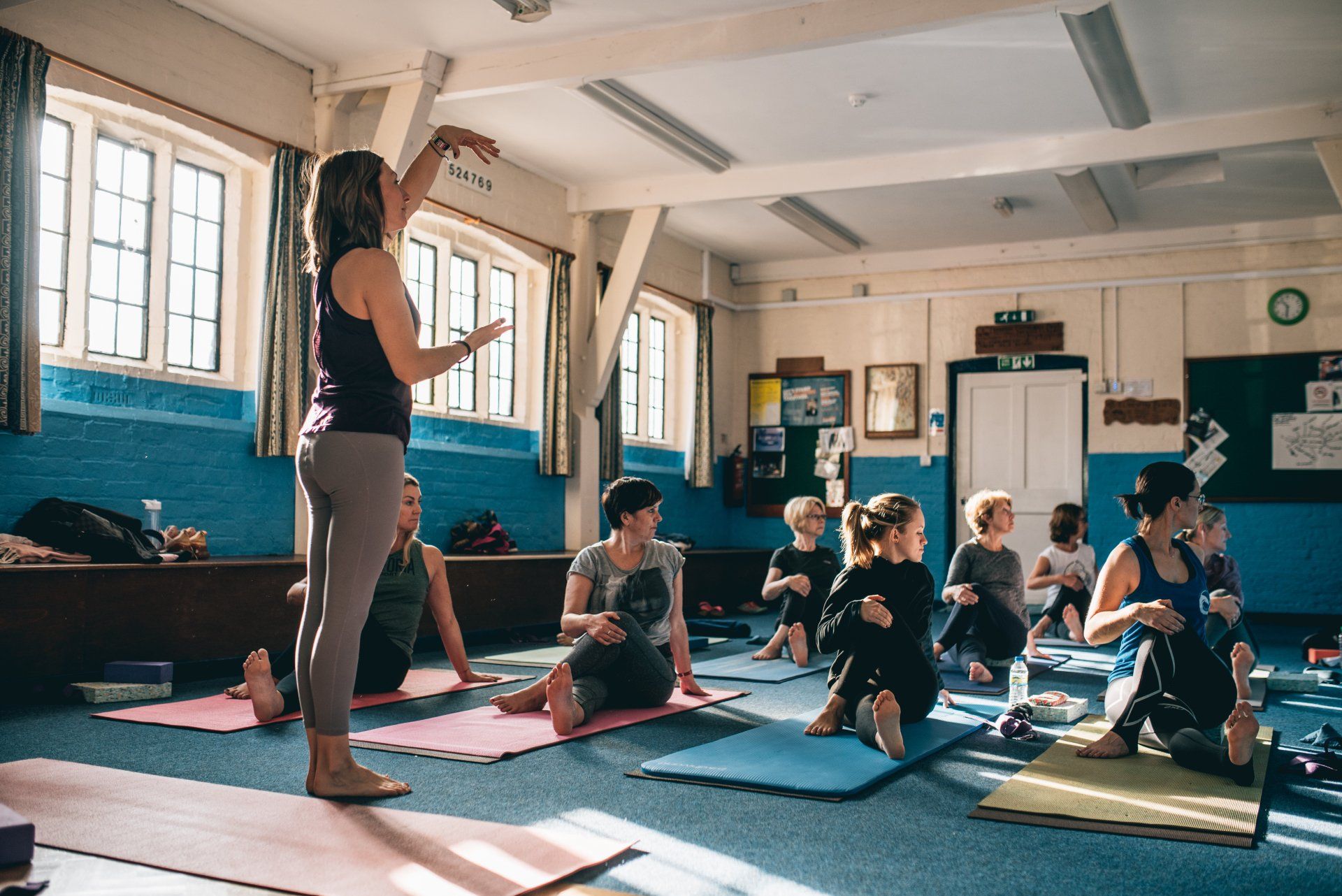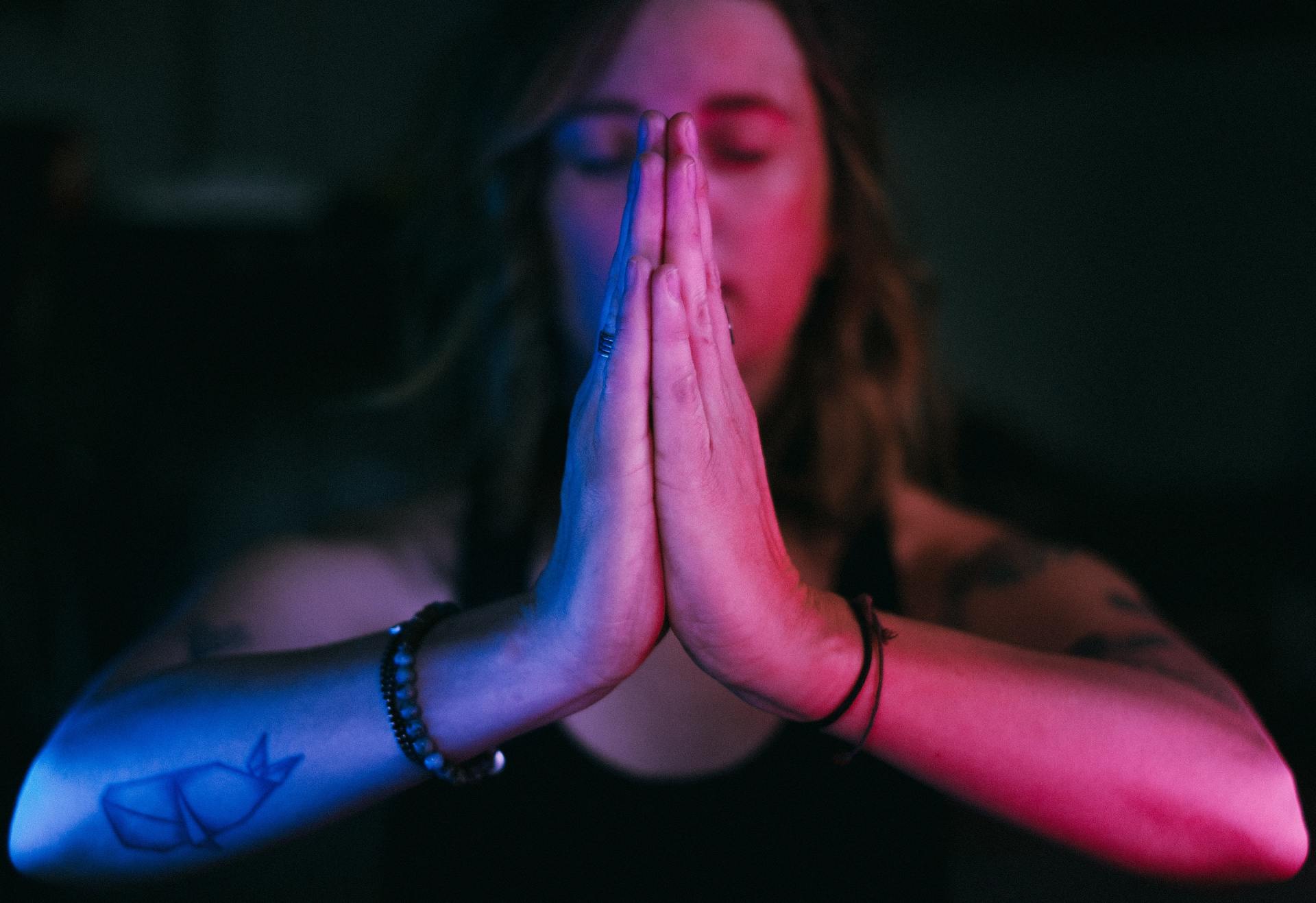Life on Lockdown...
Callie Glover • May 1, 2020
To all my students and friends from yoga...
It feels like forever since I set up a room ready to greet you all at a class or a workshop. I never could have imagined going this length of time without needing my trusty yoga bag filled with essential oils, books and dreamy room spray - my yoga essentials that came with me everywhere for creating the perfect atmosphere for you to breathe, stretch, unwind and connect through yoga.
I miss the Scout Hut crew, my chums from Brew + Tucker, the folk from Helsby Golf Club and the friendly faces from Frodsham Leisure Centre, Yokogowa and Winsford Lifestyle. You were all such a big part of my life and I always felt better for being in your presence.
But here we are, 6 weeks in - a surreal and almost unbelievable way of life that resembles nothing of what it did not just two months ago!
Some days I am still in my pyjamas at 4 pm and my only human contact is with my lovely husband and my two spoilt dogs who are thoroughly embracing lockdown because it means more time with their beloved humans!!
When the restrictions were first put in place, I joined the thousands of yoga teachers, frantically trying to get online so that I could teach you, connect with you - not to lose my living and status as a "yoga teacher". I tried and failed, tried again and failed, and after 10 solid days of frustration, tears and a LOT of wine, I decided to take it as a sign that my role as a yoga teacher during this time was not to be making yoga videos but doing something else - I had to think outside the box!
So I allowed myself a few days off from technology and came up with the idea of creating a course to help people connect with nature - a way for people to find some respite from the worry and turmoil they were drowning in. I have always wanted to run a course but shied away from the responsibility of creating one because I knew how much time and energy it would take to deliver one worth the effort, and I also knew that I had to believe in myself to be able to do it! This situation has highlighted how adaptable and creative we really are and how, when faced with the unimaginable, we can rise-up and find the faith needed to carry on and pull through.
I took a deep breath and thought, "let's give it a go", and to my surprise and delight, I had many people sign up for the course. It was a welcome distraction for me have something like this to get my teeth stuck into and I am so happy to have received such brilliant feedback from you all. It has been a great comfort to know that I have contributed in some way to helping ease the stress that this difficult situation has caused.
So, although we haven't connected in the traditional sense; face-to-face at class and via Zoom online, I feel happy to have opened up a communication with you through my course and look forward to finding new and creative ways to bring yoga into your life at these challenging times.
If you would like to read the details of my Embracing the Elements Course you can read more here.
With affection,
Callie x

A Tim e of Splendour Autumn truly is a time of splendour. The crimson, copper earth captivates with its beauty and as summer fades, we await the smell of autumn in the breeze and the sound of rustling leaves. Evenings become noticeably cooler and the days shorten - all a natural process of the seasonal cycles. As this dramatic display of change and transition takes place around us, we also may feel the shift within. We are, after all, comprised of the elements that make up the natural world. As nature prepares for the darker, colder phase of the year, if we listen closely, we will hear whisperings from our body to do the same. Changes in Nature The natural world goes through so many changes in September and October but a fitting example of what also happens within our own body is the changes that happen to the leaves and plant life. Think of how the leaves change during Autumn. Right before our eyes, they turn from vibrant, glossy green to a coppery, dry, rough texture. The prana or life force that rises to the surface during Summer, drawn inwards and down in Autumn - causing the moisture and dewey quality to disappear. Eventually, the leaves fall, leaving the trees bare, until months later in Spring they burst into life again. This same dryness occurs within our body - dry skin, lips, and joints! It is Vata that is responsible for this change! Vata can increase within the body and mental/emotional landscape in Autumn and if it isn't kept in check, can wreak havoc on our mental and emotional wellbeing as well as our body! Ayurveda - The Tri Doshas Ayurveda teaches that the Tri Doshas - ' Vata ', ' Pitta ' and ' Kapha ' make up the natural world and everything within it; including the human body. It considers each of us as constitutionally unique. Our constitutions, our nature, is known as prakruti and it remains the same from birth. Although our prakruti stays the same, we are influenced by our environment, lifestyle choices, events, stressors etc. Ayurveda suggests that in order to maintain a balanced state of health (living in according to our prakruti), we should achieve a better understanding of how our thoughts and activities affect our state of physical and mental health. We each possess some amount of all three doshas, although most of us are predominantly one dosha. With knowledge of your dosha type, you can gain a better understanding of which daily practices, activities and foods support your constitution. Your prakruti is represented by three doshas: Vata (Space & Air) - movement, change, cool, dry, light, air Pitta (Fire & Water) - hot, oily, light, radiance, liquid, sharp, penetrating Kapha (Earth & Water) - heavy, slow, dull, soft, static, cohesive, smooth Vata Dosha in Autumn - how we are affected With its changeable, cooling, light and airy qualities, Vata increases during Autumn affecting us in many different ways. Here are some clear ways Vata has increased within your body/mind - 1. Dry, stiff cracking or popping joints 2. Cracked or dry skin - lips, cuticles, face 3. Bloating or excess gas 4. Muscle stiffness 5. Restlessness even when tired 6. Inability to concentrate (start tasks but don't finish) 7. Increased nervousness or fear 8. Anxiety 9. Irritabiity 10. Disturbed sleep Ways to Pacify Vata through Yoga Keywords when pacifying Vata are GROUNDING, STEADY, SOOTHING, WARM, CONSISTENT, EASE. A yoga practice that helps you to let go of your worries and concerns and supports the gentle and gradual warming of the body is best. Here are some recommendations: 1. Keep movements slow and mindful. Repetitions work well as it gently focuses the mind. 2. Joint mobilisation with an emphasis on inner body awareness will anchor the mind and increase circulation and warmth. 3. Asana (postures) that encourage stability such as tree pose, warrior 2 and triangle are all excellent to promote feelings of groundedness. 4. Asana that promotes good digestion such as twists, forward bends, core strengtheners - (nothing too strenuous as Vata people tire easily). The reason for this is because the site of Vata is in the colon, so when Vata is rising it can affect the health of the digestive system. 5. In meditation use visualisations of nature such as mountains, forests, a calm lake - this will soothe anxiety and promote feelings of safety and ease. 6. Include restorative poses that require you to give weight and receive support - this will greatly benefit the nervous system and allow the mind to relax. 7. Allow time for seated postures such as half head to knee pose, easy seat, thunderbolt pose - these all allow for steadiness and ease. 8. Never skip Savasana - always allow time for rest after a physical yoga practice. When Vata is high, lethargy can be prevalent so prioritise rest! Finding Balance To stay healthy and well during the changing seasons we can learn to adapt to them by inviting the opposing qualities or (Gunas) into our lifestyle. For example during Autumn, as the weather cools and the days become shorter, we can introduce things that are warming, grounding and nourishing. This can be in a yoga practice as mentioned above, our diet changing from cold, raw food to hearty home-cooked stews, casseroles etc, minimising time on screens and making time for self-care such as relaxing baths, a good book etc. If we take the time to listen to our body and honour what feels good and supportive to us, we can't go wrong. Enjoy the beauty of Autumn! Callie x

“Unexpected kindness is the most powerful, least costly, and most underrated agent of human change.” — Bob Kerrey It's Mental Health Awareness Week and I am so happy to see that the theme this year is 'Kindness Matters'. Kindness is defined as, "The quality of being warm-hearted and considerate, humane and sympathetic. An inclination to do kind or charitable acts - tender kindness motivated by a feeling of affection, considerateness and thoughtfulness." We have all experienced moments when we have felt wobbly, scared, unsure, confused, lonely or sad. Spells of despair that may have lasted a few hours, or stretched on for days, weeks, months or even years. We all have stories to tell, and have been through times of hardship, loss, a broken heart and hopelessness. Everyone we encounter, has been, or is currently, fighting a battle in some way - this is why kindness is SO important. Kindness truly is the greatest gift we can offer - we never know just how far a kind word or act can go. Extending kindness to someone helps us to put judgment aside and be with that person on their level, on our level - for we are all alike, simply doing our best in whatever way we know how . It doesn't have to be a big deal - small acts of kindness matter, and may brighten someone's day, make a person feel appreciated or give someone hope. A listening ear. A warm hug. Some gentle words of advice. Yoga and meditation help quiet the critical inner voice that steals our inner peace and happiness, and helps us cultivate a healthy, kind and compassionate relationship with ourselves. If we see ourself as a failure, unworthy, a dissapointment or ugly, this will be reflected back into the world and make it impossible for us to see the good in others, We can only hold a caring, supportive and loving space for others within us, if we recognise that we too are worthy of kindness and love. Yoga works on improving the relationshi[p we have with ourselves on many levels - we nurture the relationship we have with our body, breath, mind and spirit. That's not to say that everyone who practices yoga is perfect - none of us are, but yoga shines the light of awareness onto our actions and choices positively influences how we show up in the world. Here are a few examples of How Yoga Makes Us Kind: 1. Yoga asana (yoga postures) help us to refine our relationship with our body and shows us just how magnificent and miraculous our body is. We see clearly how our unique body is a vehicle for experiencing this one, precious life through. The more we use our body in yoga the more naturally we begin to make better choices for it - nurturing food, plenty of water, movement and exercise, periods of rest. We grow to appreciate our body and treat it with kindness instead of harming it and viewing it as something to be hated. As we cultivate a love for our own body we embrace and accept all bodies - we are all unique! 2. Conscious awareness of breath in a yoga practice teaches us to be in the present moment. Each time we return to the moment as it is, we are allowing for the chattering mind to slow down. The breath offers us the gift of presence - we can feel, sense and be with life as it is unfolding, instead of being lost in the exhausting cycles of scolding and judging for past mistakes and fretting and worrying about a future that hasn't arrived yet. Being fully awake to the moment is an extension of kindness toward ourselves - we are essentially permitting ourselves to be at peace, and a peaceful person is naturally kinder and more compassionate to others. 3. Yoga can make us more heart-centered. We may start to listen to what our heart has to say and follow it's gentle voice instead of only living through logic and reason. We soften, feel, and make connections with people that are long-lasting, authentic and valuable. When we live and make choices based on what the heart says, we are less likely to go down a path that doesn't fulfil us or stay in relationships that harm us or make decisions that hurt others. There is a quiet, gentle voice that guides and whispers, "Is it kind, is it true, is it necessary?" These are just a few examples of how yoga contriutes to a kinder world. I am thankful to yoga for showing me how to let kindness be the force behind everything I do and feel blessed to have received such kindness from friends and family when I have needed it most. With love, Callie x







